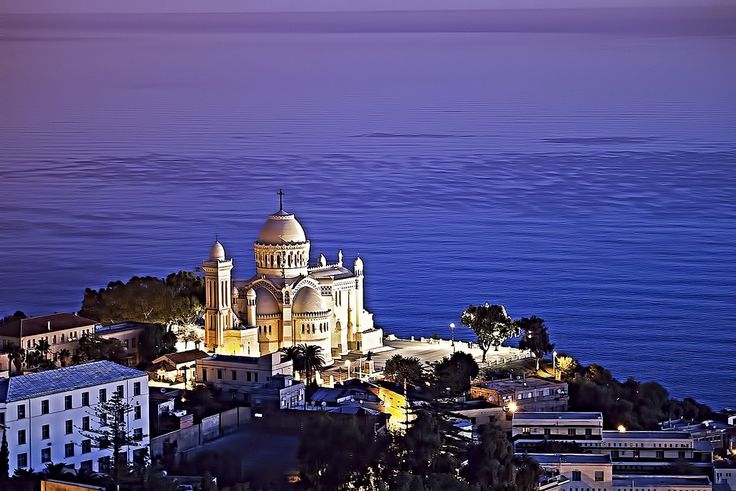Algeria, the largest country in Africa, remains one of the continent’s best-kept travel secrets. Stretching from the blue waters of the Mediterranean to the endless sands of the Sahara, this North African nation offers a fascinating blend of cultures, landscapes, and histories. Though often overshadowed by its neighbors Morocco and Tunisia, Algeria is increasingly attracting adventurous travelers eager to discover a country where tradition and authenticity remain intact.
A Land of Ancient Civilizations
Algeria’s history is written in stone. The country has been home to Berber tribes for millennia and later hosted Phoenician, Roman, Byzantine, Arab, and Ottoman influences. This layered past has left Algeria with some of the most impressive archaeological sites in North Africa.
The city of Timgad, founded by the Romans in the 1st century AD, is often called the “Pompeii of Africa.” Its remarkably preserved grid layout, triumphal arch, theater, and mosaics reveal the sophistication of Roman urban planning. Equally impressive is Djemila, another Roman city, where temples, basilicas, and public baths stand against the backdrop of rolling hills. Both are UNESCO World Heritage Sites and provide a vivid journey into antiquity.
In the coastal region, the city of Tipasa offers ruins that combine Roman, Phoenician, and early Christian heritage, all overlooking the Mediterranean Sea. Walking through its crumbling amphitheaters and forums while hearing the sound of the waves is a uniquely atmospheric experience.
The Mediterranean Coast
While Algeria’s Sahara often steals the spotlight, its Mediterranean coastline stretches for more than 1,000 kilometers and is dotted with charming towns, sandy beaches, and fishing villages. The capital, Algiers, nicknamed “Algiers the White,” is a vibrant city where French colonial architecture blends with Arab and Berber traditions. The Casbah of Algiers, a UNESCO site, is a labyrinth of narrow alleys, mosques, and traditional houses that has inspired artists and filmmakers for decades.
For travelers seeking a coastal escape, resorts around Oran and Annaba offer sandy beaches and a more relaxed atmosphere. Oran, the country’s second-largest city, is also the birthplace of raï music, giving visitors a taste of Algeria’s cultural heartbeat through lively rhythms and performances.
The Immensity of the Sahara
No trip to Algeria is complete without venturing into the Sahara Desert, which covers more than 80% of the country. This vast expanse offers some of the most dramatic desert landscapes in the world.
The region of Hoggar (Ahaggar Mountains) near Tamanrasset is particularly striking. Here, jagged volcanic peaks rise from the desert, and the landscape feels almost extraterrestrial. The area is closely associated with Charles de Foucauld, the French hermit and explorer who lived among the Tuareg people in the early 20th century.
Further south, the Tassili n’Ajjer plateau is a treasure trove of prehistoric rock art. Thousands of cave paintings and engravings, some over 7,000 years old, depict scenes of hunting, dancing, and wildlife, offering a window into an ancient Sahara that was once lush and green. This UNESCO site is both a natural wonder and a cultural archive.
For the quintessential desert experience, visitors can take camel treks across golden dunes, camp under star-filled skies, and share tea with Tuareg nomads. The silence and vastness of the Sahara provide a sense of peace and timelessness found in few other places on Earth.
Mountains and Oases
Beyond the desert, Algeria also boasts diverse landscapes of mountains and fertile valleys. The Kabylie region, east of Algiers, is a land of rugged mountains, olive groves, and Berber villages where traditional culture thrives. The Aurès Mountains in the east are another stronghold of Berber heritage, known for their dramatic canyons and resistance during Algeria’s war of independence.
Scattered throughout the desert are green oases that serve as lifelines for local communities. Towns such as Ghardaïa, part of the M’Zab Valley UNESCO site, showcase unique architecture where whitewashed houses cluster in harmony with the arid environment. These settlements are a testament to human ingenuity in adapting to one of the harshest climates in the world.
Practical Travel Information
Best time to visit: Spring (March–May) and autumn (September–November) offer pleasant weather across the country. The Sahara is best visited in the cooler months, as summer temperatures can be extreme.
Getting there: Algiers, Oran, and Constantine have international airports connecting Algeria to Europe, the Middle East, and Africa.
Transport: Domestic flights and long-distance buses connect major cities, though distances can be vast. In the desert, guided tours are recommended for safety and logistics.
Safety: While Algeria is generally safe for tourists in designated areas, it is important to stay informed about current travel advisories and to travel with local guides when exploring remote regions.
Algeria is a land of discovery, where the footprints of ancient civilizations meet the immensity of the desert and the warmth of Mediterranean life. It is a destination for travelers who seek authenticity, adventure, and cultural depth beyond the well-trodden tourist routes.
From wandering through Roman ruins and exploring the alleys of Algiers’ Casbah to gazing at prehistoric rock art in the Sahara and sharing stories with Tuareg nomads under a canopy of stars, Algeria offers experiences that are both humbling and inspiring.
Though still underexplored, Algeria’s time as a major travel destination is surely approaching. For those willing to take the path less traveled, it promises a journey like no other — into the heart of North Africa’s largest and most enigmatic country.


